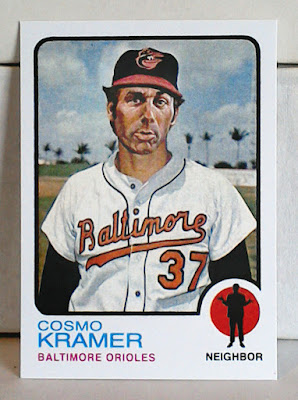Way back in 1978, the NHL allowed teams to start selling advertising space along the boards of their rinks. By the time I was a hockey card–collecting kid in the late 1980s, the trend had caught on. From snack foods to car manufacturers to banks to fast food restaurants, board advertisements really ran the gamut—and they still do.
This series will explore some of the advertisements that also managed to make their way onto hockey cards.
Previous entries are available here.
Here's Bobby Holik, coasting along the ice, seemingly oblivious to the Los Angeles Kings player behind him who's trying to slow him down with a hook of the stick.
If you're a card collector, however, one thing you're not oblivious to is the logo on the boards just to the right of Mr. Holik.
Upper Deck!
And this is interesting. Mr. Holik's card featured here is from the inaugural release of hockey cards from that very same brand, Upper Deck, in 1990-91. It was also Holik's very first season in the NHL. This means the picture on the card had to be taken that very same year, at the Great Western Forum in Los Angeles. And this means the folks at the Great Western Forum were pretty forward thinking when it came to their board advertisements.
But it makes sense. 1990-91 was a watershed season for hockey cards. Along with the standard Topps and O-Pee-Chee offerings, suddenly collectors had many more brands to choose from: Bowman, Score, O-Pee-Chee Premier, and Pro Set all swooped in on the market. And with the outrageous popularity of Upper Deck's inaugural baseball card set from the previous year, it's no wonder the Great Western Forum chose Upper Deck as the card company for their hockey rink boards.
And here's something to keep in mind: We're talking about a time that existed before digital photography and instant photo submission across the internet. Holik's card is in the high number series, which was released a bit later in the 1990-91 season. But still, kudos to Upper Deck for getting their photographers out there mid-season to snap and develop shots of a few rookies (or as they'd call them, "young guns") like Holik, Fedorov, Bondra, and Bure. The effort also meant they'd be able to feature quite a few players who'd been traded in the off-season, or even mid-season, on their new teams, instead of printing the standard "now with [insert team here]" text on the card fronts like Topps and O-Pee-Chee would always do.
And thanks in part to all that forward thinking, the Upper Deck brand still exists today—the only brand of all those mentioned above that still produces hockey cards. (The O-Pee-Chee name still exists, but it's owned by... guess who... Upper Deck.)
I'm sure some of you readers and hockey card collectors remember the frenzy of the card market back in 1990, when every brand was the hottest, or best, or most advanced. Fun times, for sure.
Do you remember seeing any advertisements for the new hockey card companies back then, be it at hockey rinks, in Beckett magazines, on billboards, or anywhere else?
Share some memories in the comment section, and thanks for reading.









